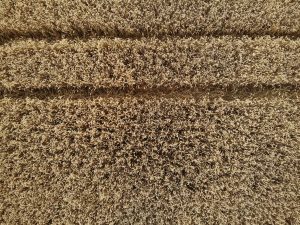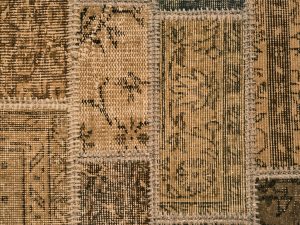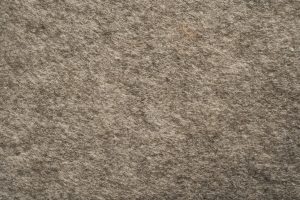How to Choose the Best Carpet for Brooklyn Center Homes in 2025
Types of Carpet Guide for Homes
 Selecting the right carpet guide for your home involves balancing durability, comfort, and style to suit your lifestyle and climate. Below are the top carpet types, tailored to various needs:
Selecting the right carpet guide for your home involves balancing durability, comfort, and style to suit your lifestyle and climate. Below are the top carpet types, tailored to various needs:
Nylon: Renowned for exceptional durability, nylon resists wear and tear, making it Defining for high-traffic areas like living rooms or hallways. It’s stain-resistant, easy to clean, and available in a wide range of colors and patterns, ideal for vibrant households. Best for: Family homes with kids or pets.
Polyester: Prized for its softness and vivid color options, polyester offers a budget-friendly, eco-conscious choice, often made from recycled plastic bottles. While less durable than nylon, it’s plush and cozy, ideal for low-traffic areas like bedrooms. Best for: Budget-conscious homeowners seeking comfort.
Olefin (Polypropylene): Affordable and highly resistant to moisture, stains, and fading, olefin is a practical choice for basements or homes with pets. It’s less soft but excels in humid conditions. Best for: Basements or pet-friendly homes.
Wool: A premium, eco-friendly option, wool is naturally stain-resistant, flame-retardant, and insulating, providing warmth during cold winters. Its luxurious feel suits formal spaces but comes at a higher cost. Best for: Low-traffic areas like dining rooms or master suites.
Frieze (Twist): With its tightly twisted pile, frieze offers a textured, modern look that hides footprints and dirt. It’s durable and stylish, perfect for busy family rooms, though it requires regular vacuuming to maintain its appearance. Best for: Casual, high-traffic living spaces.
Berber: Featuring a looped pile, Berber is tough, stain-resistant, and budget-friendly, ideal for hallways, stairs, or home offices. Its firm texture is less plush but excels in durability. Best for: High-traffic zones or minimalist aesthetics.
Tip: Choose low-VOC (volatile organic compound) carpets for better indoor air quality, especially in homes with children or allergy sufferers.
Choosing the Right Carpet Guide
Finding the perfect carpet guide requires aligning your choice with lifestyle, room function, and environment. Consider these factors:
Lifestyle Needs:
High-Traffic Homes: Families with kids or pets should prioritize durable, stain-resistant options like nylon, frieze, or Berber.
Quiet Households: Couples or retirees can opt for luxurious, softer carpets like wool or polyester for added comfort.
Climate Adaptation:
Winter Warmth: Thick, high-pile carpets (wool, nylon) insulate against cold winters.
Summer Humidity: Moisture-resistant olefin or low-pile Berber prevents mold and mildew in humid conditions.
Room-Specific Needs:
Bedrooms: Soft, cozy carpets like polyester or wool enhance comfort and relaxation.
Living Rooms: Durable nylon or frieze handles heavy foot traffic while maintaining style.
Basements: Olefin or Berber resists moisture and potential flooding risks.
Stairs/Hallways: Berber or low-pile nylon ensures durability and safety.
Aesthetic and Color:
Neutral Tones (beige, gray, taupe): Versatile, hide dirt, and complement various home styles.
Bold Colors (navy, emerald): Add personality but may show stains or fade faster in sunlit rooms.
Patterns: Subtle patterns in frieze or Berber add texture and mask wear in busy areas.
Budget Considerations:
Affordable: Olefin and polyester offer value without sacrificing quality.
Mid-Range: Nylon and frieze balance cost and durability.
Premium: Wool is a long-term investment for elegance and sustainability.
Carpet Padding: Invest in high-quality padding (6–8 mm thick) to enhance comfort, reduce noise, and extend carpet life, especially in high-traffic areas.
Sustainability: Look for carpets with Green Label Plus or CRI (Carpet and Rug Institute) certifications for low emissions and eco-friendly materials.
Maintenance: Consider ease of cleaning—nylon and olefin are low-maintenance, while wool and frieze may need professional care.
Pro Tip: Bring carpet samples home to test under natural light and against furniture. Check for warranties (10–25 years for wear/stain resistance) and ask retailers for recommendations specific to your needs.
Professional Installation vs. DIY
 Carpet installation can transform your home, but should you hire professionals or tackle it yourself? Here’s a detailed comparison to guide your decision:
Carpet installation can transform your home, but should you hire professionals or tackle it yourself? Here’s a detailed comparison to guide your decision:
Professional Installation
Advantages:
Precision: Experts measure accurately, cut seamlessly, and stretch carpets properly to avoid wrinkles, gaps, or premature wear.
Efficiency: Most jobs are completed in 4–8 hours, depending on room size, minimizing disruption to your schedule.
Warranty Protection: Many carpet manufacturers require professional installation to maintain warranties (e.g., stain or wear guarantees).
Specialized Tools: Pros use power stretchers, knee kickers, and seam irons for flawless results, plus handle subfloor prep (e.g., leveling, cleaning).
Disadvantages:
Cost: Expect $0.50–$2.00 per square foot for labor, with additional fees for stairs, furniture moving, or old carpet removal.
Scheduling: Booking may take days or weeks, especially during peak seasons.
Best For: Large projects (multiple rooms, stairs), complex layouts, or homeowners seeking a polished, worry-free result.
DIY Installation
Advantages:
Cost Savings: Save on labor, spending only on materials (carpet, padding, tack strips, adhesive) and tool rentals ($50–$100/day).
Control: Work at your own pace and customize the process to your preferences.
Skill-Building: Learn valuable home improvement skills for future projects.
Disadvantages:
Time-Consuming: Installation can take 1–3 days for a single room, longer for beginners or complex areas like stairs.
Learning Curve: Mistakes (e.g., improper stretching, misaligned seams) can damage the carpet or void warranties.
Physical Demands: Cutting, lifting, and kneeling are labor-intensive and may cause strain.
Tool Costs: Renting or buying equipment (carpet stretcher, utility knife, seam roller) adds to expenses.
Risk of Errors: Uneven subfloors or poor measurements can lead to costly fixes.
Best For: Small, simple projects (e.g., a single bedroom or closet) and handy homeowners with time and patience.
Considerations
Subfloor Prep: Homes with concrete or uneven subfloors may require leveling or moisture barriers, especially for basements, which professionals handle efficiently.
Tool Access: Tools are available at hardware stores, but ensure you’re comfortable with subfloor prep and stretching techniques for DIY.
Retailer Support: Many retailers offer free consultations or discounts on installation with purchase.
Recommendation in Carpet Guide
 For most homeowners, professional installation is the safer, more efficient choice for large or intricate projects, ensuring long-lasting results and warranty protection. DIY is feasible for small, straightforward areas if you’re experienced and have time to learn. Before starting, measure rooms carefully (width x length + 10% for waste), inspect subfloors for moisture or damage, and follow manufacturer guidelines. For DIY, watch online tutorials specific to your carpet guide type and consult experts for advice.
For most homeowners, professional installation is the safer, more efficient choice for large or intricate projects, ensuring long-lasting results and warranty protection. DIY is feasible for small, straightforward areas if you’re experienced and have time to learn. Before starting, measure rooms carefully (width x length + 10% for waste), inspect subfloors for moisture or damage, and follow manufacturer guidelines. For DIY, watch online tutorials specific to your carpet guide type and consult experts for advice.
Final Tip: Request quotes from 2–3 installers and compare services (e.g., furniture moving, old carpet disposal). For DIY, budget for unexpected costs like subfloor repairs or extra materials.
